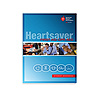
With nearly 80 percent of sudden cardiac arrests occurring outside the hospital, it is important that employers offer CPR and AED training for their employees to respond to a sudden cardiac arrest emergency.
Upon successful completion of the course, including a skills test, students receive a Heartsaver CPR AED course completion card, valid for 2 years.
Course Covers
- Key changes reflecting the new science from the 2015 American Heart Association Guidelines for Cardiopulmonary Resuscitation and Emergency Cardiovascular Care
- Adult CPR and AED use
- Optional modules in child CPR and AED use and infant CPR, including child and infant choking
- Optional written test
Primary Audience
This course is for anyone with limited or no medical trainingwho needs a course completion card in CPR and AED use to meet job, regulatory or other requirements.
Sudden cardiac arrest can happen to anyone at anytime. Through our Heartsaver CPR AED Course, your employees will have the confidence and skills to respond to these emergencies.
Unfortunately, emergencies happen in the workplace. When a life is at stake, don’t settle for less. Rely on quality training from the trusted leader in CPR and emergency cardiovascular care — rely on the American Heart Association.
This classroom course teaches basic CPR skills such as performing a head tilt-chin lift and giving compressions and breaths. The course provides training for anyone who wants to learn basic CPR and obtain a Heartsaver course completion card.
Heartsaver CPR AED is a classroom course/class that teaches basic CPR and AED skills such as:
• Giving CPR to an infant, child, or an adult
• Using an Automated External Defibrillator (AED) device
• Using a mask or barrier
The AHA’s Heartsaver CPR AED course for workplace training are offered online, and in classroom settings. Please know that the online portion MUST be completed and the online certificate needs to be submitted in to your Instructor. For an additional cost, a Skills Session with Instructor MUST also be completed to receive your certification card valid for 2 years.
1) What are the Heartsaver classroom courses?
The American Heart Association’s core Heartsaver classroom courses, for those with little or no medical training, include Heartsaver First Aid, Heartsaver CPR AED and Heartsaver First Aid CPR AED. These videobased, Instructor-led courses teach participants critical skills needed to respond to and manage an emergency in the first few minutes until emergency medical services (EMS) takes over. Depending on the course, participants learn how to recognize, respond to and treat a variety of first aid emergencies, and perform CPR and use an AED in the event of a sudden cardiac arrest.
2) Who is the target audience for the Heartsaver classroom products and courses?
These courses are for anyone with limited or no medical training who needs a course completion card in first aid and/or CPR AED to meet job, regulatory or other requirements.
3) Are continuing education (CE/CME) credits offered for the Heartsaver classroom-based courses?
No, CE/CME credits are not offered for these classroom courses.
4) Does successful completion of the Heartsaver classroom courses result in receipt of an AHA course completion card? If so, what card?
Yes, students who successfully complete the requirements of these courses will receive an AHA course completion card, valid two years. The table below indicates the card received for each course:
Course Card Received
- Heartsaver First Aid Heartsaver First Aid Course Completion Card
- Heartsaver CPR AED Heartsaver CPR AED Course Completion Card
- Heartsaver First Aid CPR AED Heartsaver First Aid CPR AED Course Completion Card
5) Approximately how long do the Heartsaver classroom courses take to complete?
The following are the approximate completion times for each course.
- · Heartsaver First Aid: approximately 2 – 3 hours
- · Heartsaver CPR AED: approximately 3 – 4 hours
- · Heartsaver First Aid CPR AED: approximately 5 – 7 hours
6) What is the format for the Heartsaver classroom courses?
Heartsaver courses teach skills using the AHA’s research-proven Practice-While-Watching technique, which allows Instructors to observe students, provide feedback and guide students’ acquisition of skills. These courses include skills practice and testing to ensure students demonstrate competency performing skills and have mastered knowledge of cognitive information.
